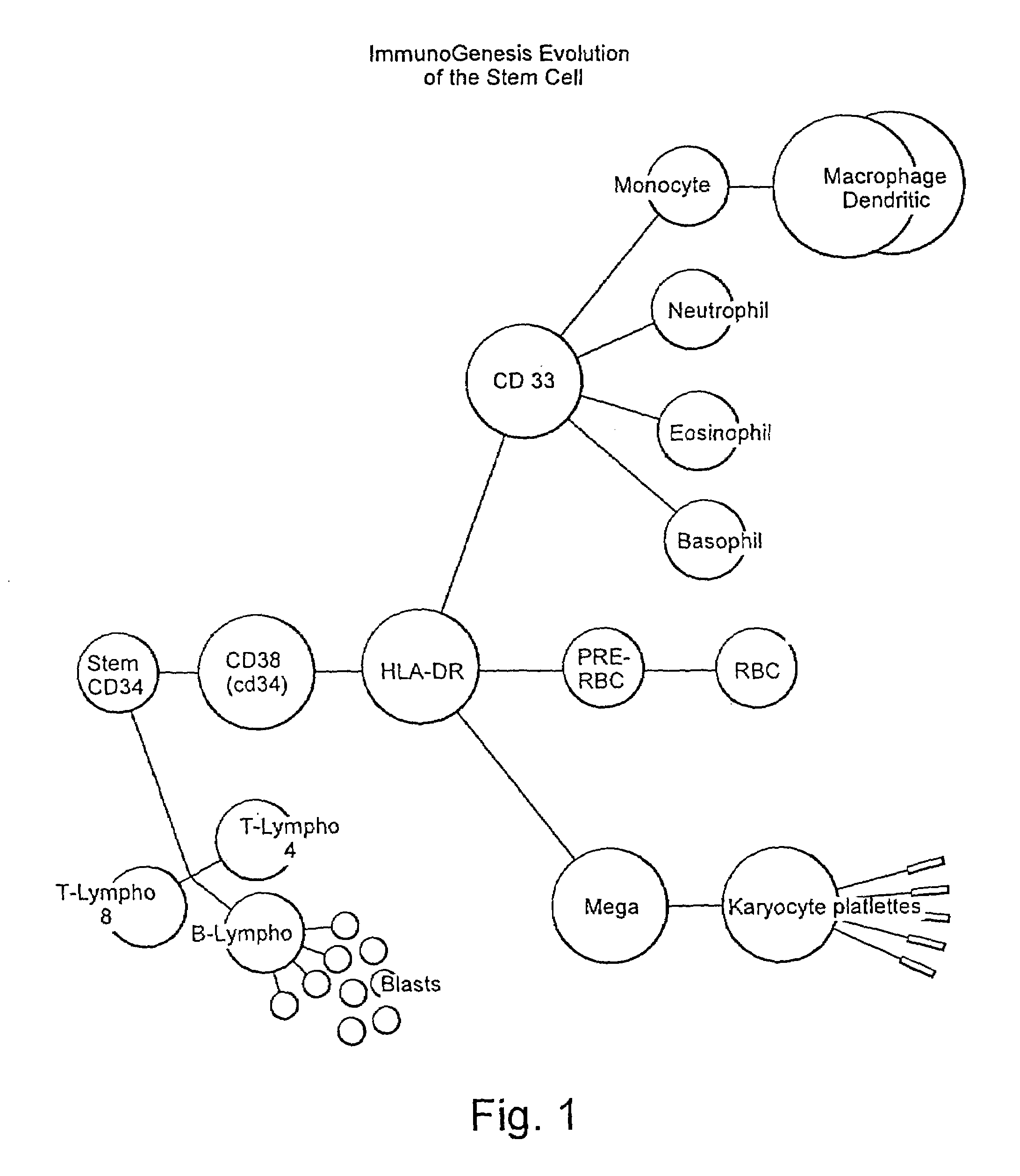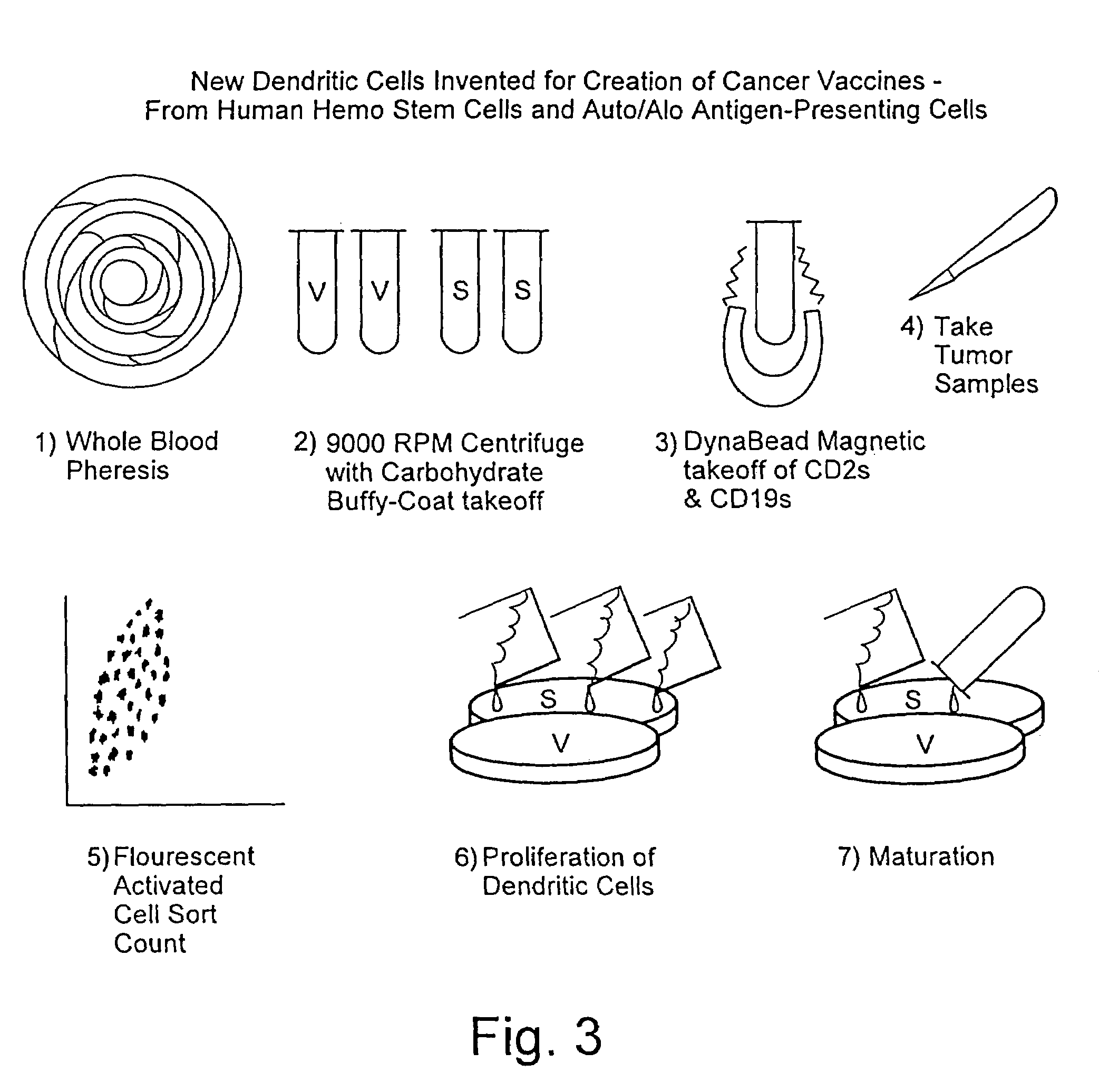Method for stimulating an immune response
a technology of hematopoietic progenitor cells and immune response, which is applied in the direction of fused cells, biocide, antibody medical ingredients, etc., can solve the problems of unreliable long-term effectiveness, unreliable immune system recognition of cancer cells as “non-self, and many additional pain and suffering for patients, etc., to stimulate the immune response and stimulate the immune response. , the effect of high yield
- Summary
- Abstract
- Description
- Claims
- Application Information
AI Technical Summary
Benefits of technology
Problems solved by technology
Method used
Image
Examples
example i (
CD34+)
[0041]The preparation of pSAPCs by directing the maturation of CD34+ cells is similar to the methodology used to direct CD34− cells. However there are distinct protocol differences. For CD34+ directed maturation host peripheral blood is ficolled, washed and resuspended in PBS / 0.1% BSA. The cell suspension, consisting of “adherent” (monocytes and macrophages) and “nonadherent” (stem cells, T4, T8 and B cells) are separated such that the nonadherent cell types are retained. This nonadherent mixture is then reacted with Dynal magnetic beads (indirect) which are sensitive for T4, T8 and B cells. The stem cells from which pAPCs will be generated are left in solution. The beads are then centrifuged and cells in solution are stained using directly conjugated FITC and PE-labeled CD3, CD 19, CD34, CD 14, CD45. The stained cell suspension is then analyzed by flow cytometry. Desired fractions are collected and cultured in AIM 5 (made by Gibco) in 10% FBS, 10% HS, 1% NEAA, 1% NaPyruvate, ...
example ii (
CD34−)
[0044]The ability of utilizing the potential of CD34− cells provides for marked improvement to current methodologies known in the art. It is known that peripheral blood contains up to approximately a ten to one ratio of CD34− to CD34+ cells. Use of CD34− cells provides for a vast increase in cell population that can be effectively utilized in cancer therapy regimens. Moreover, the difficulties associated with leukophoresis procedure currently carried out to obtain sufficient quantities of stem cells will be avoided. Currently CD34− cells are discarded as it is believed that they are precommitted to become macrophages. However, CD34− cells may be programmed towards dendritic commitment with proper incubation and lymphokine stimulation.
[0045]In this example, the cell donor is pretreated with IL-3 and either G-CSF or GM-CSF. For adult patient / donors, the regimen is administration of IL-3 at 15–55 ug / Kg / day for 4 consecutive days followed by 3 days without such administration. Nex...
PUM
| Property | Measurement | Unit |
|---|---|---|
| Time | aaaaa | aaaaa |
Abstract
Description
Claims
Application Information
 Login to View More
Login to View More - R&D
- Intellectual Property
- Life Sciences
- Materials
- Tech Scout
- Unparalleled Data Quality
- Higher Quality Content
- 60% Fewer Hallucinations
Browse by: Latest US Patents, China's latest patents, Technical Efficacy Thesaurus, Application Domain, Technology Topic, Popular Technical Reports.
© 2025 PatSnap. All rights reserved.Legal|Privacy policy|Modern Slavery Act Transparency Statement|Sitemap|About US| Contact US: help@patsnap.com



